One of the biggest challenges for first-time commercial real estate investors is understanding how much down payment they would need to save up for to buy a commercial real estate mortgage of property. But the question here is how much down payment is needed.
While there is no perfect answer to this question, you can understand that different types of commercial mortgage financing require different percentages of down payments to be made.
Understanding how down payments work for commercial real estate loans will help you make informed financing decisions. In this blog, we will walk you through the down payment guide, including everything you need to know about down payments to buy commercial real estate properties.
Conventional mortgages
Conventional mortgages need up to 10 to 20 percent of the purchase price to be put down in the form of a down payment. What are conventional mortgages? A commercial mortgage is a mortgage that a lender makes to a borrower based on the credit score, income, and other debts.
If a conventional mortgage’s standards match the standards of Fannie Mae, these are known as conforming loans. If these limits exceed the limits of a conforming loan, it becomes a Jumbo loan.
How Much Down Payment Do You Need for a Commercial Real Estate Loan?
As mentioned earlier, the amount of down payment largely depends on the financing type you are looking for and the type of commercial property you invest in. Bearing that in mind – if you want to finance a property as an investment property using a conventional mortgage, you will typically need at least 20% of the purchase price as a down payment.
Fannie Mae’s minimum lending standards will allow a single-family investment property loan with 15% down payments, but this can again jump to a 25% down payment in the case of multi-family properties.
These are the minimum standards, and most lenders use more restrictive requirements while originating conventional mortgages for investment property types. Many investors try to get great benefits by financing an investment property as their second home.
While that is a good hack to get good rates – you should remember that this option is only available when you plan to use the property yourself for at least some time.
If you can pull this off, then the down payment requirement can go as low as 10%. Although qualifying for a second home loan is quite challenging.
While these are only Fannie Mae standards – you must note that most conventional lenders use similar lending requirements. Many investors also make the best use of minimum down payment standards. These loans generally have other strong qualification requirements like a good credit score and a strong debt to income ratio.
Another requirement that will add up to your profile and increase your chances of qualifying for minimum standards is having several months’ worth of expenses in liquid reserves. Every borrower must remember that just because you have got a loan that has asked you to put only a 15 % down payment, that does not mean that this investment is profitable.
You will still need to pay mortgage insurance until your loan to value ratio comes below 80%, putting a serious amount of pressure on the property’s cash flows.
Thus, while it is good to hunt for a loan with a low down payment, you should always ensure and double-check that the numbers are still working for you in the long run and a low down payment standard is not the only thing that counts.
FHA Loans
If you plan to live in the property, you have some great options that you can explore, and FHA loans top the list of such options. FHA mortgages carry higher fees than conventional loans but only require around 3.5 % down payment.
Thus, if you are an investor who plans on buying a multi-family property, you can house-hack your way to getting an FHA loan approved by living in one unit and renting out the others.
Many commercial real estate investors have used this hack to get the best FHA loans and start building their portfolios. This is a good place to start for beginners.
Commercial Lenders
Commercial lenders are asset-based lenders who provide commercial real estate financing based on the underlying property’s potential rental income by using this property as collateral. Commercial lenders can be a great savior if you can not qualify for a conventional mortgage.
Most commercial mortgages have high qualifying standards, and if you suffer from a poor credit score – then commercial lenders will be your best bet. In a typical scenario, commercial lenders would need at least a 20% down payment, and there is no big mortgage insurance available for these types of loans.
The percentage of a down payment largely depends on your credit qualifications and the income-generating capacity of your property coupled with other factors. Thus you might also be asked to put down 25% to 30% of the purchase price.
Alternatives if you cannot arrange for a down payment
If you cannot arrange for a minimum down payment of at least 20% of the purchase price, there are some alternatives besides solutions like house hacking or vacation homes. As a general rule, you should understand that the more money you finance, the lesser your margin of safety will be.
Here are a few ways you can raise funds for a down payment on your investment property if you cannot arrange for the basic 20 % down payment purchase price. Remember that these alternatives can work great only in the right financial circumstances.
Thus weighing their benefits in the light of your financial situation is very important.
#1 – Personal loans
You can always finance your commercial investment property with your loan, although this might not be the best solution under all circumstances. If you know a commercial lender or a private lender closely, you can always negotiate good terms with them and get a personal loan approved to fund your property investments.
#2 – Home equity loans
The next best alternative for you is a home equity loan, where your mortgage is backed by the equity you have in your home. Creditworthy borrowers can easily get a home equity loan. One of the biggest advantages of providing a home equity loan is the relatively low-interest rates and low origination fees.
In a nutshell
The down payment requirements for investment properties depend on several factors. However, as a general rule of thumb – you can be informed that you should plan on saving at least 20% of the purchase price as your down payment.
If you get lucky, you might find some conventional lenders who will originate single-family rental property loans at a 15% down payment. This will only lead to a small reduction in the total payment and, in most cases, not worth the added expense of the mortgage insurance you would be taking.
Thus while thinking about your best financing options, always bear in mind that low down payment is not the only factor determining how profitable your investment can be. There are a lot of other factors which must be factored in while making your financing decision.
A loan with a high down payment but low mortgage rates and an overall low mortgage expense is always a good option to explore compared to a loan with a minimal down payment but comes with huge loan expenses and high origination fees.





